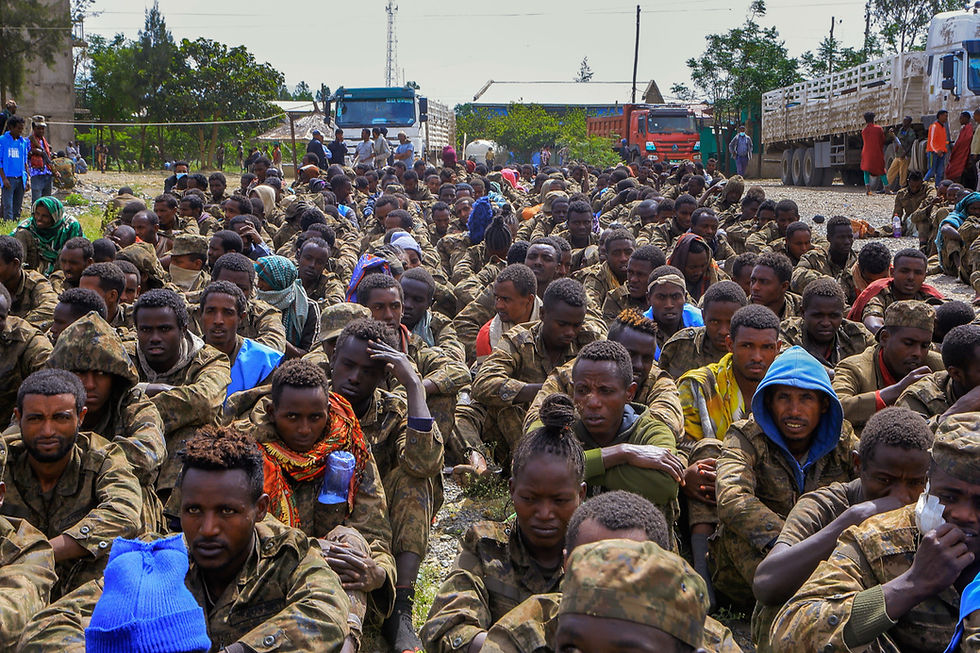Ethiopia (I): The Ethnic Federalism Failure
- Pablo Díaz Gayoso

- Mar 18
- 4 min read
Historical context of Ethiopian nationalism:
Ethiopia's history has been strongly marked by ethnicity and the sometimes violent power struggles between them. Ethiopia is a country of more than 130 million people, who are subdivided into 80 ethnic groups. The majority groups, i.e., with more than 1 million members, number only 12. The main ones are the Oromo, Amhara, Somali, Tigrinya, Afar and others, as they have their own territorial organisations in the current political system.
The origins of the contemporary Ethiopian political system can be traced back to the resistance against the communist dictatorship of the Derg. The Derg military government, like its predecessor, Haile Selassie's absolute monarchy, was predominantly composed of ethnic Amhara. The Marxist-Leninist Derg government also had a strong Amhara nationalist sentiment and was culturally imposing itself on the minority ethnic groups. Such measures included the promotion of Amharic over other languages such as Oromo.

Ethiopian nationalism is civic in nature and is based on seeing Ethiopia as a multicultural nation where different ethnic groups coexist but maintain political unity, i.e. a unitary federation. The problem with the application of this vision of Ethiopia is that it has served to make Amhara nationalists understand that this unity is based not on syncretism, but on their political and cultural hegemony over other ethnic groups. Against this conception, which prevailed for most of the 20th century, ethno-nationalism or ethnic federalism emerged and began to be applied with the fall of the Derg government at the end of the century.
The dictatorship was overthrown by a coalition of armed groups led by the Tigray People's Liberation Front (TPLF). The opposition comprised, in addition to the TPLF, the Oromo Liberation Front (OLF), Oromo People's Democratic Organisation (OPDO), the Eritrean People's Liberation Front (EPLF), the West Somali Liberation Front, the Amhara National Democratic Movement (ANDM) and others who created the Transitional Government of Ethiopia (TGE). The TGE failed to maintain internal cohesion and first the pro-independence Oromo representatives of the OLF (but not the OOPD) and later the Eritreans left. In the case of the Eritreans, they seized the Ethiopian region of Eritrea and declared independence in 1993 after more than 30 years of war with the governments in Addis Ababa.
The implementation of ethnic federalism under the TPLF regime (1991-2018)
The most novel reform established by the coalition under TPLF leadership was to territorially divide Ethiopia on the basis of the majority ethnicity of the region. The aim was to end inter-ethnic violence, Amhara nationalist attempts at cultural domination of the country and also to facilitate minority rule by the TPLF over a more divided majority. This system soon created problems among other ethnic groups as it meant placing internal boundaries in areas that were disputed. This was the case with the Welkait territory issue. This dispute, located in the Western Tigray sub-region, has been passing from Amhara to Tigrayan hands and vice versa for the past 100 years. On the other hand, Oromo representatives welcomed this reform because, as the largest, poorest and most unequal ethnic group, they see ethnic federalism as the best way to assert themselves politically.

The 1994 constitution establishes a bicameral legislature, divided into the House of Peoples' Representatives (lower) and the House of Federation (upper). The 547 members of the lower house are elected every 5 years in single-member constituencies in a one-round majority system. Ethnic minorities are constitutionally reserved 22 seats. The upper house, on the other hand, is composed of one member from each nation or nationality, and those with a population of more than 1 million get one representative per million. The composition of the upper house varies from election to election due to Ethiopia's explosive birth rate (fertility rate of over 4 children per woman). Upper house parliamentarians are elected every 5 years either by the regional state parliaments or the regional state parliaments have the power to call elections to choose their representative.
The territorial division of Ethiopia into four administrative levels, the regions of the country (kililoch), zones, districts (woredas) and municipalities/neighbourhoods (kebeles). Woredas represent the basic supra-municipal unit and are governed by the Council of Woreda made up of elected representatives of the kebeles. These districts are part of Ethiopia's historical and cultural heritage as it is an institution dating back several centuries.
In 2018 this system designed by the TPLF-led federal coalition government began to falter. That year, Abiy Ahmed, leader of the Oromo Democratic Party (former OPDO), became the leader of the ruling coalition. This was a historic milestone because never before had an Oromo Muslim representative come to lead Ethiopia. Ahmed announced a review of ethnic federalism, which eventually led to the TPLF's departure from the ruling coalition. This constitutional revision was originally intended to turn the country into a centralist multi-party democracy. As we will see in part two, in Ethiopia (II): The Drums of War Resound, this system of ethnic federalism has failed. Far from defusing inter-ethnic tensions as it was intended to do, it has brought the country and the region to the brink of collapse in the most brutal civil war in living memory for decades to come.










Comments